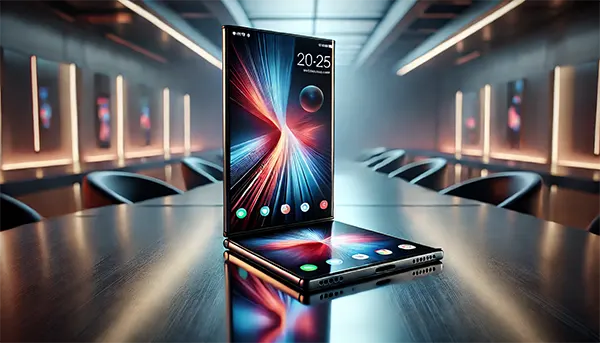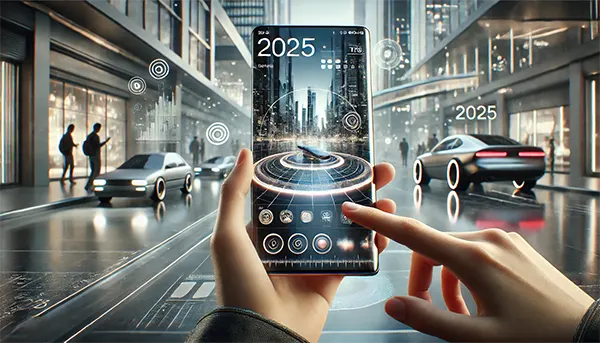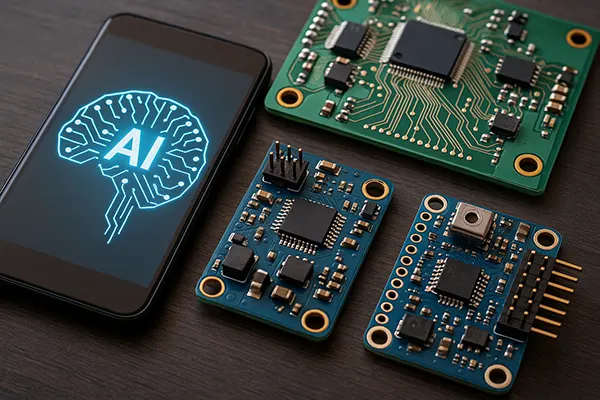Trends in Android Smartphone Development in 2025

The Android smartphone market continues to evolve at an unprecedented pace, with manufacturers pushing the boundaries of innovation. As we move through 2025, several key trends are shaping the future of Android devices. These include advancements in artificial intelligence (AI), revolutionary design modifications, and the expansion of sustainable technology. With leading brands competing to offer more powerful, efficient, and eco-friendly devices, the landscape of Android smartphones is poised for a transformative year.
Artificial Intelligence and Performance Enhancements
Artificial intelligence is playing a crucial role in optimising Android smartphones, delivering improved user experiences and performance capabilities. AI-driven chipsets are now integrated into flagship models, enabling real-time enhancements for photography, gaming, and battery efficiency. This progression ensures that devices can adapt dynamically to user behaviour, making smartphones more intuitive and responsive than ever before.
AI-Powered Photography and Videography
One of the most significant improvements AI has brought to smartphones is within camera technology. Advanced computational photography allows users to capture professional-grade images with minimal effort. Features such as real-time scene recognition, automated retouching, and AI-enhanced video stabilisation are now standard in premium models, setting new benchmarks for mobile photography.
Moreover, AI algorithms are improving night mode photography by reducing noise and enhancing detail, making low-light photography accessible to all users. Machine learning continuously refines these features, providing an even better experience with each software update.
Video recording is also benefiting from AI, with automated motion tracking and real-time HDR adjustments ensuring smoother, high-quality footage. This is particularly useful for content creators who rely on smartphones for professional-level production.
Adaptive Battery and Power Management
Battery life has long been a key concern for smartphone users, but AI-driven power management is changing the game. Devices now utilise machine learning to analyse usage patterns and allocate resources efficiently, extending battery performance.
Features such as adaptive charging, which slows down battery degradation by intelligently managing power input, and AI-driven energy-saving modes contribute to longer-lasting devices. This approach not only enhances user experience but also aligns with sustainability efforts by reducing electronic waste.
With AI continuously evolving, future updates will further refine power efficiency, making smartphones more reliable for extended use, particularly for those who rely on their devices for work and entertainment.
Innovative Design and Form Factors
Smartphone design is undergoing radical transformations, with manufacturers exploring new form factors and materials. In 2025, flexible displays, durable foldable phones, and bezel-free designs are becoming more mainstream, redefining the way users interact with their devices.
Foldable and Rollable Displays
Foldable smartphones have moved beyond their early stages, with manufacturers perfecting hinge mechanisms and display durability. Improved ultra-thin glass technology ensures that these devices can withstand daily use while maintaining a sleek and modern appearance.
Additionally, rollable displays are emerging as an alternative to foldables, offering dynamic screen expansion for multitasking and media consumption. Users can seamlessly transition between compact and expanded modes, providing enhanced versatility without the bulk of traditional foldable designs.
These advancements make smartphones more adaptable, catering to professionals, gamers, and multimedia enthusiasts who require a versatile, high-performance device.
Eco-Friendly and Sustainable Materials
With growing environmental awareness, manufacturers are prioritising sustainability in smartphone production. In 2025, the use of recycled materials, biodegradable components, and energy-efficient manufacturing processes is becoming a standard practice.
Brands are also focusing on modular smartphone designs, allowing users to replace individual components rather than discarding entire devices. This approach reduces electronic waste and extends the lifespan of smartphones, aligning with global sustainability goals.
Furthermore, energy-efficient OLED and microLED screens contribute to lower power consumption, enhancing both performance and environmental impact. As eco-conscious consumers demand greener products, manufacturers are investing in research to develop more sustainable technology.

Connectivity and Future Network Developments
Fast and reliable connectivity is at the heart of smartphone evolution, and 2025 is set to witness significant advancements in wireless technology. With the expansion of 5G networks and the introduction of 6G research, mobile internet speeds and efficiency are reaching new heights.
5G Expansion and Latency Reduction
5G connectivity is no longer exclusive to flagship models, as mid-range and budget smartphones now incorporate the technology. Faster download speeds, lower latency, and improved stability are enabling seamless streaming, gaming, and remote work capabilities.
Telecommunications companies are also enhancing 5G infrastructure to support broader coverage, ensuring that users in both urban and rural areas can experience ultra-fast internet speeds. This development is critical for industries that rely on real-time data exchange, such as autonomous vehicles and smart city solutions.
Moreover, cloud gaming services are benefiting from reduced latency, allowing gamers to access high-quality titles on their smartphones without the need for powerful hardware. This shift is making mobile gaming more accessible and immersive than ever before.
Preparations for 6G Technology
Although 5G is still in its expansion phase, researchers are already working on 6G technology, which is expected to revolutionise connectivity even further. Early studies indicate that 6G will offer speeds up to 100 times faster than 5G, supporting real-time holographic communication and ultra-responsive AI integration.
While commercial deployment is still years away, smartphone manufacturers are preparing for the transition by developing hardware that can accommodate future network advancements. This forward-thinking approach ensures that Android devices remain at the cutting edge of innovation.
As connectivity continues to improve, the seamless integration of AI, cloud computing, and smart applications will redefine the capabilities of Android smartphones in the coming years.
Popular topics
-
 Edge AI and TinyML: How Int...
Edge AI and TinyML: How Int...Edge-level artificial intelligence has become one of the most …
-
 How to Programmatically Bui...
How to Programmatically Bui...Creating a flexible and efficient microservices ecosystem in 2025 …
-
 The Role of Artificial Inte...
The Role of Artificial Inte...Artificial intelligence has become a practical component of gambling …
-
 Virtual and real hosting, w...
Virtual and real hosting, w...Today, many providers offer virtual servers where you can …
-
 Post-Quantum Cryptography i...
Post-Quantum Cryptography i...As the era of quantum computing approaches, traditional cryptographic …
